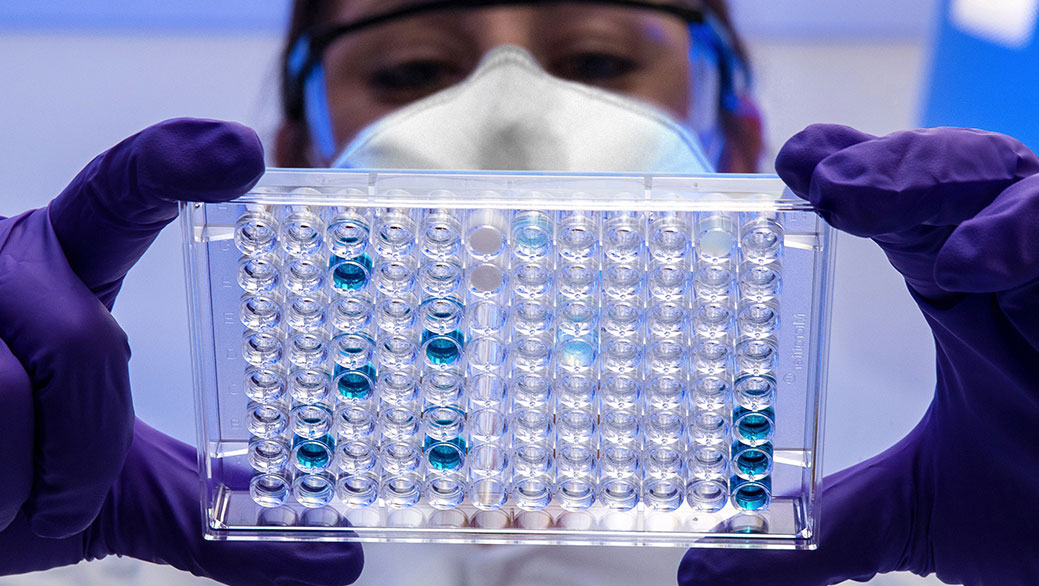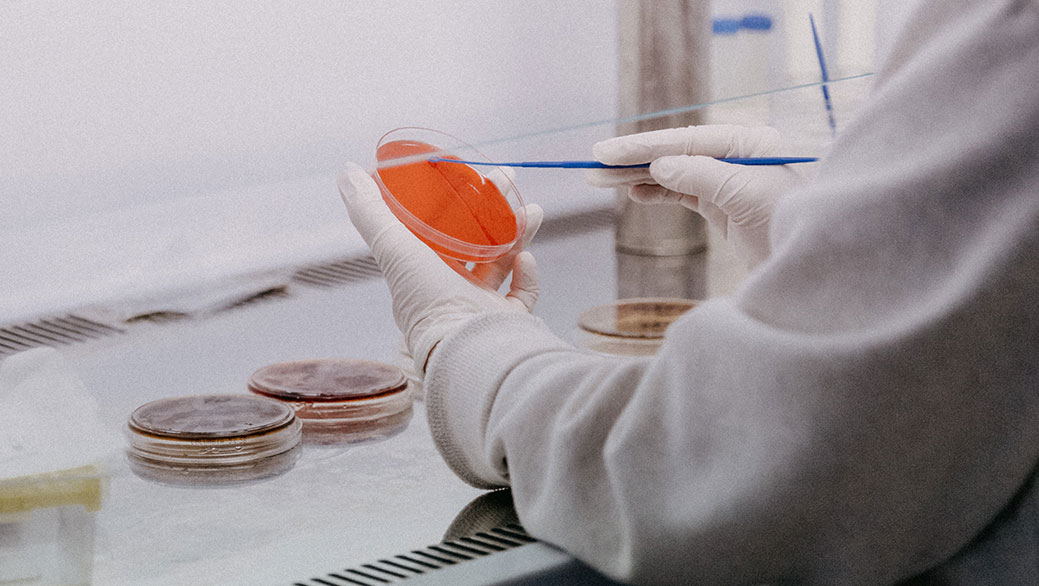DNA-Sequencing & Editing
DNA sequencing allows detecting and decoding organisms‘ genomes, creating the foundation for other technologies and procedures such as detecting diseases and DNA editing. The editing of DNA allows to create altered organisms with distinct attributes typically not found in nature. By developing new technologies and improving existing ones, DNA sequencing and editing gets more cost-effective and capable in the future.
RECENT DEVELOPMENTS
DNA-Sequencing
DNA sequencing is the determination of the nucleotide sequence in a DNA molecule. DNA sequencing has revolutionized the biological sciences and ushered in the era of genomics. Since 1995, DNA sequencing has made it possible to analyze the genome of over 50,000 (as of 2020) different organisms. From a technological point of view, today next generation sequencing is used to sequence certain strains of DNA which is still comparatively expensive. The technology is moving towards nanopore sequencing which resembles the 4th generation of sequencing which is faster and cheaper and hence can drastically cut costs. The goal is to implement new technologies that allow to sequence the whole genome of an organism. Today, target sequencing is the industry standard which allows for a compromise between cost and efficiency. However, the downside of this process is the risk to not sequence otherwise important genomes.
DNA-Editing
Genome editing or genome surgery is a collective term for molecular biology techniques for the targeted modification of DNA, including the genetic material of plants, animals and humans. During the editing process the genome is cut and altered sequences can be included in established organisms. Generally, genomes can be cut, edited or delete, creating newly designed genomes strains.
CRISPR-Cas9
CRISPR/Cas9 – this acronym stands for a new process for altering DNA building blocks in the genome, as simply and precisely as was unimaginable until recently. Although it originated in bacteria, this „gene scissor“ works in almost all living cells and organisms: it promises new possibilities against AIDS, cancer and a number of hereditary diseases but also in the breeding of plants and animals. Emmanuelle Charpentier and Jennifer Doudna, two molecular biologists, received the 2020 Nobel Prize in Chemistry for their work.
IMPLICATIONS FOR THE HEALTH INDUSTRY
DNA-sequencing is the foundation for many future healthcare applications such as early screening for diseases and preventive measures as well towards personalized healthcare which allows to treat diseases in a more in a more precise and effective way. Beyond that, individual medicine can be developed based on the sequenced genomes of a person.
DNA editing has the potential to eliminate diseases on the individual level by editing the genome of humans to not response to diseases (e.g. viruses). Furthermore, humans can be designed based on certain preferences and even creating super-humans with certain traits such as intelligence, muscular, creativity, etc. With the same token this approach raises ethical questions to be considered.
Today, this technology is still comparatively expensive and hence the broader global application is still limited. Nevertheless, improving technologies and the development of more cost-efficient solutions might harbor the potential to be applied globally as well under budget constraints. However, by detecting diseases at an early-stage substantial costs can be saved in a health care system by reducing the needed resources for the treatment of diseases.
MICROTRENDS
Ares Genetics
Ares Genetics GmbH is part of the OpGen group. Together, they improve patient care and fight AMR through cutting edge molecular microbiology. Ares Genetics is revolutionizing how we address the global challenge of AMR. Ares enables better infection control and more targeted patient care by providing unprecedented insight into AMR through NGS and AI powered solutions. Theirinnovative AI powered and machine learning (ML) driven approach leverages the extensive, curated database ARESdb to comprehensively detect and determine the genetic profile of pathogens. Unlike conventional molecular assays, Ares Genetics solutions not only detect AMR markers but shed light on prevalence and diagnostic performance for these markers and predict how pathogens will respond to therapy.

myllia
Myllia Biotechnology combines CRISPR screening with single-cell RNA sequencing, leveraging two transformative technologies to enable genetic screening for complex phenotypes. They utilize the CRISPR screening workflow to map the impact of thousands of genetic perturbations on the global transcriptome at single-cell resolution, thus effectively establishing a paradigm for next generation CRISPR screens. Their powerful approach has broad applications in identifying novel drug targets or elucidating unknown mechanisms of actions of drugs.

SNIPR Biome
SNIPR Biome is pioneering a novel use of CRISPR/Cas technology to address human diseases. They use our technology to selectively and precisely decimate target bacteria, while leaving the rest of the microbial community intact and unharmed. SNIPR Biome utilizes the natural bacterial CRISPR-based adaptive immune system in a programmable fashion to kill target bacteria based on their specific genomes. Their drugs are next-generation antibiotics harboring DNA-based CRISPR-Guided Vectors™ (CGV™ Technology) that cause double-stranded breaks in bacterial genomes and ultra-rapid killing in a matter of minutes, allowing rapid response in acute settings.

Caspr Biotech
Caspr Biotech develops portable kits designed to diagnose AMR and infectious diseases. The company’s kits are used to search and identify specific DNA and RNA sequences and also identify signature amino acid sequences that belong to infectious diseases and genetic mutations for the clinic or hospital, helping physicians by providing a simple, fast, portable, and affordable solution for diagnostics.

SOURCES
INFORMATION
PICTURES
Main Picture: unsplash.com
Microtrend 1: pexels.com
Microtrend 2: unsplash.com
Microtrend 3: unsplash.com
Microtrend 4: unsplash.com

